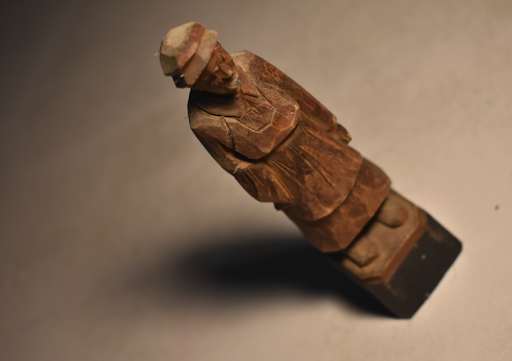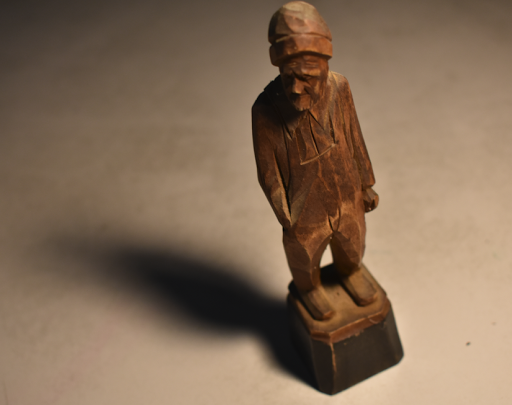Mr. Laurence SAS Blog
Monday, November 1, 2021
Sunday, January 17, 2021
Zentangle Drawing
1 large or 2 small ink drawing with a minimum of one magazine image used.
Use of line weighted, broken, thick, thin, noodling, clustered) and shape variation (geometric, organic, outlined, solid, overlapping, positive/negative) created using a range of different sized pens (.005,.01,.02,.05) and markers (zebra, sharpie).
The use of the lines and shapes drawn incorporate the magazine photo(s) to create movement in drawing attention throughout the work. Areas of negative space are used to assist in movement in the eye and to feature the use of lines and shapes in the work.
Blog post includes images that are cropped, sized to fit the web page, tonal adjustment, is displayed with the correct orientation, and a summary of project from start to finish
A detailed explanation of the concept to the ‘story’ created from the drawing, explanation to the steps taken to create the work including the compositional devices considered, and challenges and successes of exercise are also provided
ZENTANGLE LINE DRAWING DESIGN:
1 large or 2 small ink drawing with a minimum of one magazine image used.
Use of line weighted, broken, thick, thin, noodling, clustered) and shape variation (geometric, organic, outlined, solid, overlapping, positive/negative) created using a range of different sized pens (.005,.01,.02,.05) and markers (zebra, sharpie).
The use of the lines and shapes drawn incorporate the magazine photo(s) to create movement in drawing attention throughout the work. Areas of negative space are used to assist in movement in the eye and to feature the use of lines and shapes in the work.
Blog post includes images that are cropped, sized to fit the web page, tonal adjustment, is displayed with the correct orientation, and a summary of project from start to finish
A detailed explanation of the concept to the ‘story’ created from the drawing, explanation to the steps taken to create the work including the compositional devices considered, and challenges and successes of exercise are also provided
Monday, August 31, 2020
Monday, August 3, 2020
Zentangle Drawing
Cloud Text-to-Speech · Cloud Text-to-Speech basics · APIs & reference · Quickstart
Friday, May 22, 2020
Sculpture idea student example
- Day 1: Cultural Connections
- For cultural connections, we had to go onto the Internet, or onto links that we had been given to find and to choose symbols that we liked, and/or that had a personal connection to us in some form or way. These are the symbols that I chose:
- Celtic Cross: a form of the Christian cross that emerged in the Middle Ages
- Maori Hei-Matau: a highly stylised fish hook that represents good luck and safe travel across water
- Assyrian God Shamash: symbol of the Mesopotamian God of the Sun
- Egyptian Lotus: The lotus is a symbol of the sun, of creation and rebirth because at night the flower closes and sinks underwater, at dawn it rises and opens again
- We had to draw out these symbols and then 'tinker' with them or modify them. Essentially, we had to add our own 'twist' to these symbols and make varying designs in some way, by altering the overall shape, or the details inside, we could choose. We had to do three to four of these designs and variations. Once this was done, in class we had to paste a picture of our work onto a document, write something about the symbols or about our drawings and then we received feedback from our peers, and also had to give at least three other people feedback, which meant that we would have at least three people's feedback on each of our documents, which was constructive and useful for any future progress that we made. For my drawings, I tried to keep my modifications similar in spirit and other essential and identifiable components to the original symbols, but also change them enough so they don't look exactly like the original thing and have their own unique components. For my cultural connections, here is some of the feedback that I received:
- I really like the unique tinkering you did with each symbol! I especially like the Celtic cross tinkering and the Egyptian Lotus symbol. I like that in the Egyptian Lotus symbol, you decided to open up the flower.
- I really like the tinkering in the Hei-Matau and the lotus because they are still similar to the original one but still very unique.
- All of the ways you changed them are so creative. I especially like the lotus and the hei-matau and the way you made them so similar and yet so different. i think the celtic cross is also cool, it looks a bit like a compass. i can't think of another way to change the third one, so i'm not sure if that would be a good one to pick, but if you have an idea go for it!
- Day 2: Mass
- For the mass, we had to preferably take some of the symbols we had modified and tinkered with for the previous class (cultural connections) since it would be much simpler and easier to progress from those rather than choosing new symbols and then modifying those. I was a bit confused about what the mass was actually supposed to be, because it seemed a bit vague on the document we had been given. But I figured out after some time that it was essentially meant to be the basic shape of the symbols, the outer shape. We had to tinker with these and modify them like how we had done for the cultural connections; it was good to have a range of shapes and symbols to choose from. For the mass, just like with the cultural connections, we had to paste it on the same document from the previous class and then prepare to receive feedback from our peers, and also give feedback to at least three other students. Once again, we should have had at least three pieces of feedback from other students on our documents. Here is some of the feedback I received for my mass:
- I really like how detailed you drew and modified each of the symbols. The way you changed the tail in #1 is very creative.
- I like the layering you are trying to show on sculpture #3. It brings the 3 dimension nature of sculpture into consideration. I also like your attention to detail in sculpture #2. It interested me how a minor change of the head and tail changes the sculpture from an aggressive kind of attitude to a passive one.
- Sculpture 4 has some very interesting lines that add depth to the piece and make it pop a bit more. It definitely caught my eye right away.
- Day 3: Volume
- By this stage, we definitely had to be getting more specific. Whereas for cultural connectons and mass, we could have done two, three or four completely different types of symbol variations, here we had to start focusing in more on one sort of shape. We could modify it a bit here and there, but that was about it. I was choosing to move on with my variations of the Maori Hei-Matau, the fish-hook sculpture. Essentially, volume is where the air penetrates the sculpture. It is where we place the holes in the sculpture. I definitely had more clarity on the volume than I had had for the previous class, the mass. Once again, we had to segregate the designs and examples, but this time based on how many holes the sculpture had. For example, if the design had one hole, the variation/modification would also have one hole, though the placement and shape could be different, and so on for any different number of holes. So we had to paste this on the blog for the first time, our whole progress, and we did not receive any peer feedback during this particular class period, but by this time I think everyone was more comfortable with what they were pursuing. For my volume, I had variations with one, two, three and four holes, to have a range of designs of sculptures later on in the future.
- Day 4: Surface Treatment
- For surface treatment, once again, we had to get even more specific, like the previous class, volume. We essentially had to be arriving at one shape, with very, very minor modifications. Essentially, surface treatment was the outer surface of the sculpture, and what that would look like. We had to come up with around four designs, two for outer patterns on the sculpture, without color, and two with patterns and color combinations both. This meant we should have two different color combinations and at least two different patterns, to have a range to choose from. For my volume drawings, I created four different patterns, and two different color combinations.
- My first color combination in design #1 is comprised of cool colors: green, blue and violet. I created a variation of this design; the design has vertical-like, short stripes, while the variation has three lines running the whole length of the sculpture. For my second color combination, I went with a split-complementary color scheme (a color, and the two colors that are right beside it's complementary color). For this color scheme, I used blue, red-orange and yellow-orange.
- I feel like for design #2, it has become too cluttered and I can't even tell what the pattern is anymore. I do like design #4, but I feel like it might be a bit too simple. I think for my final sculpture, I will go with the color combination of cool colors, and the pattern of design #3. I also liked design #3, since it reminds me of a mermaid's or a fish's tail, and my sculpture is essentially inspired from a Hei-Matau, or a stylized fish hook in Maori culture, so I feel like this pattern would be fitting. I also liked the cool colors for this sculpture since they symbolize greenery and water, which is fitting for something related to a fish.
- Final sculpture design idea:
- This is my final sculpture design idea! I incorporated bits of pieces of elements that I had formed across the whole project to make this. I used the normal head shape with the tail like a fish's. I have four holes, two in the tail, and two in the head. I used a cool color combination: blue, green and violet. I used the mermaid-tail/fish-tail pattern that I had done for the previous class, during surface treatment. I am really quite happy with how this sculpture idea turned out!
Sunday, April 26, 2020
Hundertwasser Line drawing Student Examples
Line Drawing Exercise
Because of the circumstances of being at home, we decided to go back to the drawing unit and create a line drawing. We were given any drawings created by Hunterwasser, an artist, and print a drawing that we liked. We then had to cut out a portion of the drawing that we felt most inspired by to continue the drawing, but with our own twist to it. Similar to the Zentangle Drawing, I used many pencil and pen techniques to create lines with different depths and thicknesses.
Original Drawing:
This is the drawing by Hunterwasser that I felt the most inspired by. I decided to cut out the square that is framed at the top of the drawing because I instantly came up with multiple ideas on how I could continue the lines and shapes to create my own drawing.

















